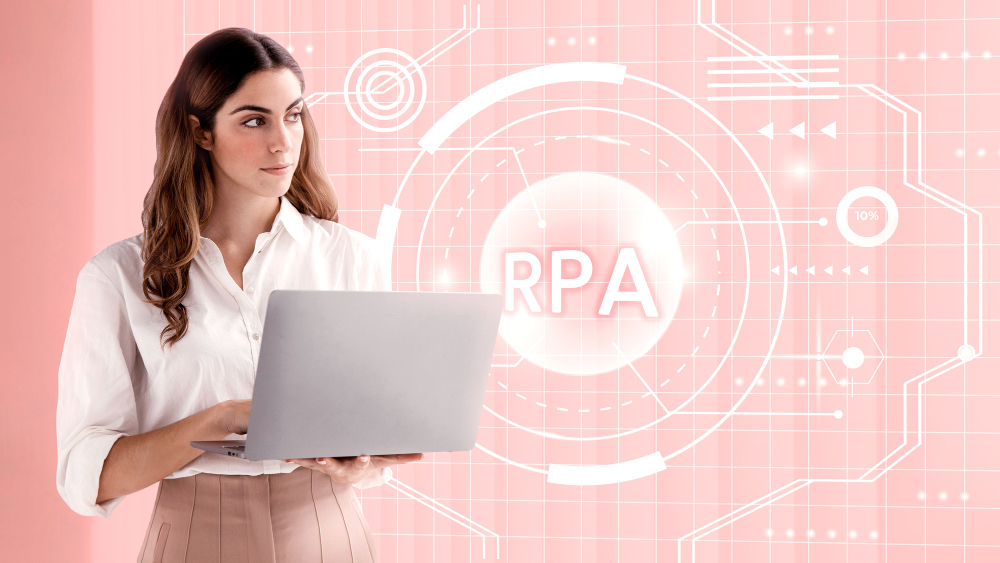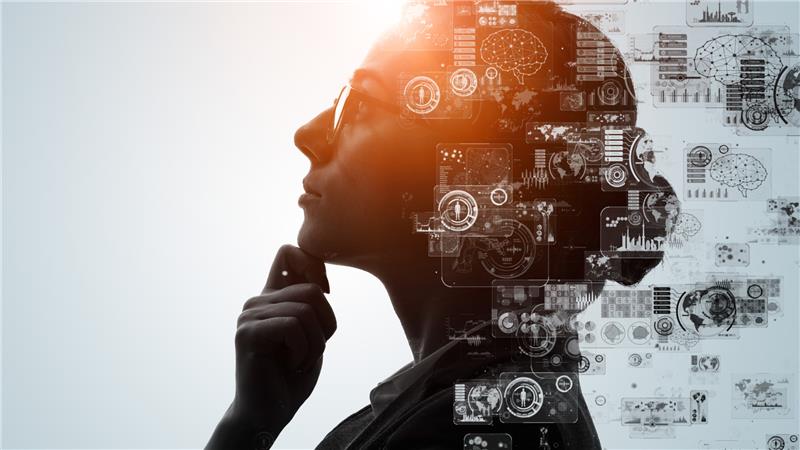
Businesses in today’s landscape are always on the lookout for more innovative ways to work more efficiently and effectively. Two buzzwords that often come up in conversations about innovation are robotic process automation (RPA) and Artificial Intelligence (AI). While many people use these terms interchangeably, they actually refer to distinct concepts and capabilities.
At Auxiliobits, a global leader in Software Consulting and Artificial Intelligence advisory, we help businesses understand and implement these powerful technologies. Let’s dive into what sets RPA apart from AI and how organizations can leverage both technologies to their advantage.
What is Robotic Process Automation (RPA)?
Robotic Process Automation (RPA) is software technology that enables businesses to automate repetitive, mundane tasks using software bots or “robots.” These bots are designed to mimic human actions within digital systems, making them an excellent solution for time-consuming tasks that are prone to human error.
Key Characteristics of RPA
- Rule-based Automation
RPA operates on clear rules and procedures. Think of it as following a recipe—if you provide the right ingredients (instructions), it will consistently produce the same dish (results).
- Mimics Human Actions
RPA bots can perform various tasks, such as logging into applications, copying and pasting data, filling out forms, and extracting information from databases. They do all this without needing to take breaks!
- Process-driven
RPA focuses on automating entire workflows based on established processes. This means businesses can significantly reduce the time spent on repetitive tasks.
- Non-intrusive Integration
One of RPA’s standout features is that it can work with existing systems without requiring any major changes. This makes implementation a breeze for many organizations.
Real-World Use Cases of RPA
RPA shines in industries like finance, healthcare, and manufacturing, automating tasks such as:-
- Invoice Processing
Bots can automatically extract data from invoices and enter it into accounting systems, speeding up processing times and reducing errors.
- Data Entry
RPA can handle data entry tasks across various applications, ensuring accuracy and efficiency.
- Customer Onboarding
In banking and insurance, RPA can streamline the onboarding process by automating document verification and account creation.
What is Artificial Intelligence (AI)?
On the other hand, Artificial Intelligence (AI) is a broader field of computer science aimed at enabling machines to perform tasks that typically require human intelligence. AI encompasses various technologies, including machine learning, natural language processing, and computer vision, allowing computers to learn, reason, and make decisions based on data.
Key Characteristics of AI
- Data-driven Decision Making
AI systems analyze data to identify patterns and trends. Unlike RPA, which follows fixed rules, AI can adapt to new information and make informed decisions.
- Cognitive Functions
AI aims to replicate human-like abilities, such as understanding language, recognizing images, and problem-solving. This makes AI capable of tackling complex tasks that require nuanced thinking.
- Adaptive Learning
AI models improve over time as they process more data. They learn from experience, allowing them to refine their outputs and enhance their performance.
- Training Requirement
Implementing AI often involves training models with extensive datasets to develop algorithms that can perform specific tasks. This process can be resource-intensive but yields powerful results.
Real-World Use Cases of AI
AI is utilized in various applications, including:-
- Customer Support
AI chatbots can understand customer inquiries and provide personalized responses, enhancing the overall customer experience.
- Predictive Analytics
Businesses leverage AI to analyze historical data and forecast future trends, aiding in data-driven decision-making.
- Image and Speech Recognition
AI technologies can identify objects in images or transcribe spoken language, facilitating applications in fields like healthcare and security.
Key Differences Between RPA and AI
So, what sets RPA apart from AI? Understanding the distinctions between these technologies is crucial for organizations looking to implement them effectively. Here are some key differences:-
1. Nature of Tasks
- RPA
Primarily automates repetitive, rule-based tasks that follow predictable patterns. It’s like having a reliable assistant who can handle the mundane details for you.
- AI
Can tackle unstructured data and make decisions based on learning and reasoning. Think of AI as your analytical friend who can provide insights and adapt to changing circumstances.
2. Learning Capabilities
- RPA
Once programmed, RPA bots perform tasks exactly as instructed without the ability to learn from experience or adapt to new information.
- AI
Continuously learns from data, improving over time and refining its outputs based on past outcomes. This adaptability allows AI to tackle more complex challenges.
3. Application Areas
- RPA
Best suited for back-office tasks, such as transaction processing and data management. It shines in environments where repetitive work is prevalent.
- AI
Excels in applications requiring decision-making, data analysis, and intelligent interactions. Its versatility allows it to be utilized across various industries.
4. Implementation Complexity
- RPA
Generally easier to implement, as it works seamlessly with existing applications and systems. Organizations can deploy RPA quickly and see immediate results.
- AI
More complex to implement, often requiring large datasets, sophisticated algorithms, and substantial computational resources. AI systems also need continuous monitoring and fine-tuning.
5. Scalability and Flexibility
- RPA
Great for scaling repetitive tasks, but less flexible when it comes to adapting to changes in the work environment.
- AI
More flexible and scalable, as it can learn and adapt to new scenarios, helping businesses respond quickly to market changes.
The Convergence of RPA and AI- Intelligent Automation
While RPA and AI are distinct technologies, their convergence is reshaping how organizations approach automation. By integrating AI with RPA, businesses can automate not only simple tasks but also complex processes that require decision-making and learning capabilities. This integration is often referred to as Intelligent Automation (IA) or Hyperautomation.
Benefits of Intelligent Automation
- Enhanced Efficiency
Automating both routine and complex tasks can significantly improve operational efficiency, allowing teams to focus on higher-value work.
- Improved Accuracy
Intelligent Automation minimizes human error by combining the precision of RPA with the decision-making abilities of AI, leading to higher quality outputs.
- Cost Savings
By streamlining workflows and reallocating human resources to more strategic tasks, organizations can reduce operational costs.
- Better Customer Experience
With AI-driven insights and automation, businesses can provide more personalized and timely services, improving customer satisfaction.
- Data-Driven Decision Making
Integrating AI with RPA enables organizations to leverage data analytics for better decision-making, keeping them competitive in a rapidly changing business landscape.
Steps to Implement Intelligent Automation
To successfully adopt Intelligent Automation, organizations should consider the following steps:-
- Identify Suitable Processes
Assess existing workflows to find tasks that are repetitive and rule-based for RPA, as well as more complex processes that can benefit from AI.
- Set Clear Objectives
Define the goals of implementing RPA and AI, ensuring alignment with overall business strategies and desired outcomes.
- Choose the Right Tools
Evaluate and select appropriate RPA and AI tools based on the specific needs of the organization.
- Train Staff
Provide training to employees to ensure they understand how to work alongside automated systems and leverage the insights generated by AI.
- Monitor and Optimize
Continuously monitor the performance of automated processes and AI models, making adjustments as needed to enhance efficiency and results.
Conclusion
In a nutshell, Robotic Process Automation (RPA) and Artificial Intelligence (AI) are both transformative technologies that can revolutionize the way organizations operate. While RPA excels at automating repetitive tasks, AI brings cognitive capabilities, learning, and adaptability. Understanding the unique strengths of each technology is crucial for businesses seeking to implement them effectively.
As organizations continue to evolve and embrace digital transformation, integrating RPA and AI through Intelligent Automation will be key to driving operational excellence, fostering innovation, and maintaining a competitive edge. Robotic Process Automation in business enables companies to streamline processes, reduce costs, and enhance efficiency, while AI adds intelligence and adaptability. By harnessing the best of both worlds, businesses can unlock new growth opportunities and thrive in today’s dynamic digital landscape where efficiency and intelligence go hand in hand.
Auxiliobits, a global Software Consulting and Artificial Intelligence advisory company, plays a pivotal role in this transformation. Auxiliobits drives digital transformation by reinventing enterprise operations through hyper-automation and AI-enabled applications, empowering businesses to stay ahead in this ever-evolving marketplace.






